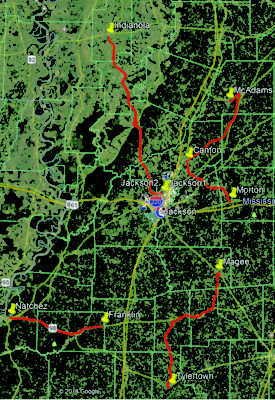

It can be even tougher when the only option is to get internet over a telephone line.” If satellite is the only option, you may have limited connectivity, and you are probably paying more for it. Rural clinics pay three times more than their urban counterparts for high speed broadband. They may go to college less prepared than their urban colleague for careers in the 21st century. “They might have lower math scores, for example.

/cloudfront-us-east-1.images.arcpublishing.com/gray/7LG5CK222VCVBHLU7U3LY5CEBU.jpg)
“Students can’t keep up in many cases with their suburban and urban counterparts,” Cikanek said. It can cost $30,000 a mile to lay down fiber optic cable and as much as $1 million to go under a river or lake or through other natural barriers.”
#C spire install#
With only a handful of potential customers per square mile, telecommunications providers are reluctant to install expensive infrastructure. A lot of farms, schools and rural clinics are located in an area too remote to bring in the private investment we want to see. “Of those, 24.4 million live in rural areas where the digital divide is the greatest. “Right now, 34 million Americans are without reliable broadband service,” Cikanek said. Zachery Cikanek, spokesperson for CAN, said this technology makes a lot of sense. Seward urges people who favor more broadband coverage in their area to visit to join the CAN coalition today and contact their members of Congress to urge the FCC to take the action to allow the private sector to make this technology available. “You can grow with the times or go down with the ship.” “You can get a good broadband signal over that and it is pretty low cost,” he said. Seward is a big fan of CAN’s proposed solution which is to deliver broadband over unused television stations channels below 700 MHz known as “white spaces.”
#C spire software#
The software we use is all cloud based, and we move a lot of data around.” “So, we do soil sampling on 2.5-acre grids. “We can have five or six soil types in any given field,” Seward said. Remote sensing equipment connected to farm equipment allows farmers to put just the right amount of nutrients in the right spots, which saves money, improves yields and reduces pollution. For example, modern precision agriculture involves variable rate applications of fertilizer. Farmers today remotely monitor and manage a lot of equipment. Equipment has become increasingly sophisticated. “Sitting alongside rural advocates and Mississippi business leaders, I heard first-hand stories of challenges our state faces due to lack of high speed internet and the immense opportunities that would stem from better broadband access.”įarmers have come to rely more and more on broadband access to help them succeed in a challenging farm economy. “As a farmer in the South Delta, I am all too familiar with the challenge of being far from a population center that naturally attracts investment in technology such as broadband access,” Seward said. Seward is excited about the possibilities. Roger Wicker to discuss expanding rural broadband service facilitated by Connect Americans Now’s (CAN). Louise farmer Darrington Seward, a member of the Delta Council, recently attended a roundtable discussion with Sen. “While there are still significant hurdles to overcome, we know from experience that a key factor in our success will be how regulators enable and encourage private investment in broadband infrastructure,” Meena said. Hu Meena, CEO of C Spire, said they applaud any meaningful efforts to provide residents and businesses in rural areas with better broadband and more access.
#C spire tv#
Efforts are underway to get regulatory approval to use TV “white spaces,” vacant channels that could be used to deliver broadband to rural areas. There is also another broadband access project underway with potential to connect even more remote areas of the Delta and the rest of the country. The project, one of the largest of its kind in the country, was described as “a win-win-win for Entergy, C Spire and the people of rural Mississippi” by Public Service Commission Chairman Brandon Presley. It was recently announced that C Spire and Entergy are planning an $11-million fiber infrastructure project that will cover 302 miles in 15 counties in Mississippi. Two major efforts are underway to help “bridge the digital divide” by providing reliable broadband service to rural parts of the state, including the Delta.


 0 kommentar(er)
0 kommentar(er)
